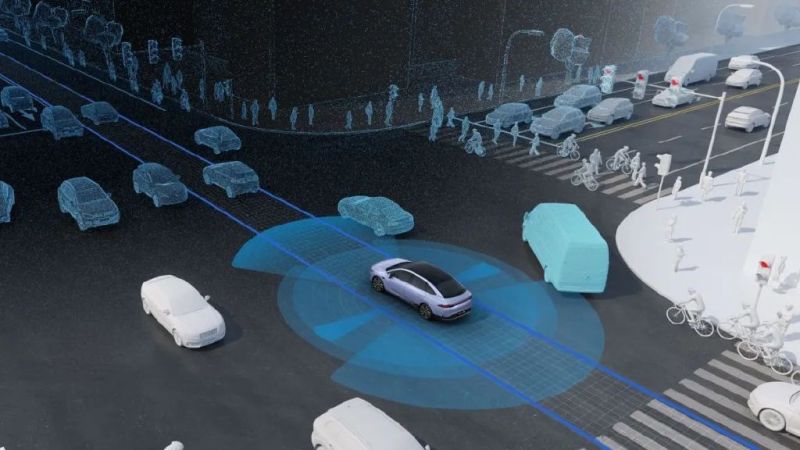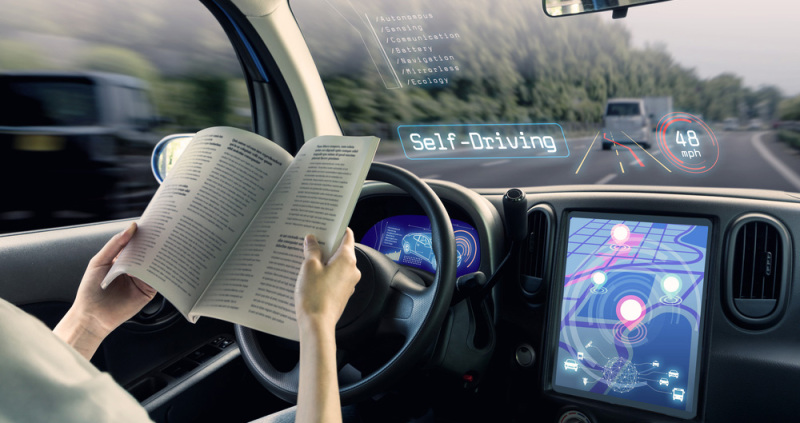J.D. Power Research Finds Drivers Are Not Interested in Advanced Driver Assistance Systems
 JamesMay 16, 2025, 03:36 PM
JamesMay 16, 2025, 03:36 PM

【PCauto】When driving, many people hope for a helper that makes their experience safer and easier. As a result, automotive manufacturers have introduced various driver assistance features.
However, a recent study by J.D. Power reveals that consumers don’t seem particularly satisfied with these functions, or even they aren’t really concerned about their existence.
J.D. Power’s 2024 U.S. Tech Experience Index Study surveyed 81,926 vehicle owners about their perceptions of 40 types of automotive technologies. The findings indicate that, while advanced driver assistance systems (ADAS) are becoming increasingly common, many drivers feel they are relatively useless.

On a 10-point scale, features such as lane-keeping assist, which requires drivers to keep their hands on the steering wheel, received only 7.61 points, while hands-free phone capabilities garnered just 7.98 points. This reflects the fact that these features have not addressed the real problems faced by drivers or improved their driving experience.
Additionally, current driver assistance features are often unstable and inaccurate. Among all reported issues, instability and inaccuracy accounted for 45%, and this figure has been steadily increasing over the past three years. People buy cars for convenience; if assistance features repeatedly malfunction, it’s better to do without them.

Another concern is that many consumers are not well-informed about these driving assistance functions. More than half of respondents could not distinguish between autonomous vehicles and self-driving cars, and 56% mistakenly identified advanced driver assistance systems as autonomous driving systems.
Many potential buyers do not explore these features in depth before purchasing a car and find themselves unsure how to use them. When issues arise, they often have to ask peers in car owner groups for help. This unfamiliarity leads to hesitance in fully utilizing these functions; drivers typically only feel less worried testing them in low-traffic situations on highways or during parking, naturally leading to negative impressions of these features.

Drivers' habits and vehicle usage scenarios vary widely. Some consumers prefer to handle their vehicles manually and find driver assistance functions more of a hindrance. Others are hopeful that these features will assist them but worry about their reliability in critical situations.
Therefore, automotive manufacturers must carefully consider how to develop driver assistance features that better meet consumer needs. This could include designing more practical functions tailored to narrow streets or frequently stopping and going traffic. Additionally, they should enhance introduction and information for consumers on how to use these functions effectively, enabling them to truly understand and confidently utilize the technology.
If any infringement occurs, please contact us for deletion
Trending News

2025 Toyota Aqua Released, Fuel Efficiency 35.4km/L, More Worth Buying Than Corolla
[PCauto] Against the backdrop of the global automotive market's continuous transition toward electrification, the Toyota Aqua, as a compact hybrid model from the brand, has always been renowned for its high efficiency and practicality.The 2025 Toyota Aqua has been officially unveiled recently, drawing market attention once again with multiple technological upgrades and high fuel efficiency.This model is built on the TNGA-B platform, achieving a new breakthrough in fuel consumption performan

Zeekr 9X will be launched in China on August 29 and has attracted attention due to its resemblance to the Cullinan
[PCauto] Geely's premium electric vehicle brand Zeekr announced that its first luxury flagship hybrid SUV model, the Zeekr 9X, will officially start pre-sale in China on August 29, 2025.This full-size luxury SUV has attracted significant market attention for its resemblance to the Rolls-Royce Cullinan in appearance, as well as its luxurious interior design and high level of configuration.Zeekr 9X Positioned as a Full-Size Luxury SUVThe Zeekr 9X dimensions are 5239/2029/1819mm, with a wheelb

2026 Malaysia EV Road Tax Policy Analysis: Costs and Opportunities After the End of Exemptions
As December 31, 2025, approaches, electric vehicle owners in Malaysia will face a significant policy turning point — the four-year electric vehicle road tax exemption policy is coming to an end. Starting from January 1, 2026, all electric vehicles will be subject to an annual road tax based on a new power-based tiered tax system. This change marks a transition for Malaysia's electric vehicle market from a policy-driven phase to a new stage of market-oriented development, bringing new considerations for both consumers and the industry.

BYD Malaysia CKD factory established in Tanjung Malim, production to start in 2026
[PCauto] On August 22, 2025, BYD officially announced through its Malaysian official distributor, BYD Sime Motors, that it will invest in building a local assembly (CKD) plant in the KLK Technology Park in Tanjung Malim, Perak. The plant is expected to commence production in 2026. This plant, covering an area of 150 acres (approximately 600,000 square meters), will adopt a completely knock-down assembly mode, with complete kits imported from China for localized production in Malaysia.

The fifth-generation Geely Emgrand car photos released, with upgrades in body size and power system
As a family sedan with cumulative sales exceeding 4 million units in China, the new generation Emgrand will further consolidate Emgrand's competitive position in the sedan market through stronger product capabilities.
Popular Cars
Car Compare
Model Year
car model

